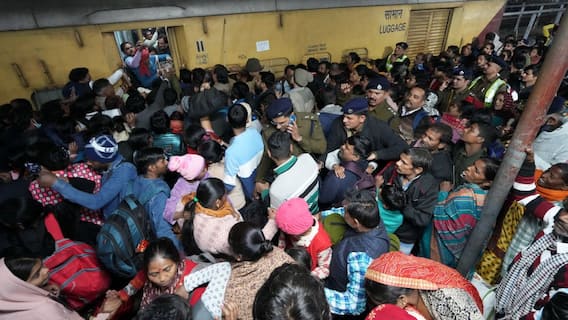Explorer
Budget 2019: Here's How Crisis-Hit NBFCs Want FM Nirmala Sitharaman To Address Liquidity Crunch
Newly appointed Finance Minister Nirmala Sitharaman is all set to table her maiden Union Budget on July 5 and one of the major issue she needs to address is the ongoing crisis in NBFC sector.

The entire shadow banking sector has been under severe liquidity stress. (Image: PTI)
Budget 2019: Newly appointed Finance Minister Nirmala Sitharaman is all set to table her maiden Union Budget on July 5 and one of the major issue she needs to address is the ongoing crisis in the Non-Banking Financial Company (NBFC) sector. Just two days ahead of the biggest annual economic exercise, the NBFC apex body Finance Industry Development Council (FIDC) has put forward its proposal to the Ministry of Finance to help the sector reeling under acute dearth of funds. According to news agency PTI, FIDC said that NBFCs should be allowed to avail of refinance facility under the Pradhan Mantri Mudra Scheme and also setting up of a permanent refinance window at Reserve Bank of India (RBI) similar to the one that National Housing Bank (NHB) offers them to help meet their liquidity needs.
Observing the current scenario, many industry experts believe that the government must come up with measures to solve the cash crunch in the industry and also make sure that the policy rate cuts benefits are passed on to NBFCs and the end-customers. After the bankruptcy of infrastructure development and financial services company IL&FS in September, last year, the entire shadow banking sector has been under severe liquidity stress with many leading players like DHFL reporting defaults.
There has been a drop of 19 per cent in liquidity crisis in disbursement by NBFCs in fourth quarter of FY-19. Prior to this, the sector used to clock growth of 15 per cent in loan disbursement. Even in the fiscal stability report released by the RBI last week, it warned that a large home finance player going down would have the same impact on the systemic stability as a large bank going belly up but assured that as of now there is no risk to financial stability from the NBFC crisis.
"All RBI registered NBFCs should be allowed to avail of a refinance under the Mudra scheme. The cap of 6 percent on the maximum spreads allowed should be done away with, since market forces ensure that the rates are within acceptable limits," the FIDC said in a statement and urging the regulator to make the necessary changes to the scheme to enable them, especially the small players, this facility.
It also said systemically important NBFCs be allowed to act as aggregators by availing refinance from Mudra for lending to small and medium-sized NBFCs. FIDC chairman Raman Agarwal also sought to allay fears about their solvency saying there is no solvency issue with NBFCs but only that their growth has slowed. "Even some sectors, which we cater to like automobiles, MSMEs, are facing slow down and it is impacting us. There is a need to find an alternative source of funding for us outside the banking channel and a dedicated refinance window can be helpful," Agarwal said.
This is not the first time that the industry body has raised the demand for a special liquidity window to help NBFCs tide over the cash crunch. Even the government had asked the RBI to provide a window for NBFCs in order to keep the economy running upward. However, it was the RBI which denied the proposal pointing out that the system-wide liquidity is in surplus and it remains committed to infusing liquidity when required.
Among long-term measures, FIDC has called for a permanent window for NBFCs along the lines of the National Housing Bank, which provided refinance to housing finance companies (HFCs). It also sought setting up an alternative investment fund (AIF) to channelize institutional funds to NBFCs and allowing non-convertible debentures (NCDs) to be subscribed to by the AIF for onward lending to NBFCs.
Several NBFC players have submitted their requests to finance minister Nirmala Sitharaman in a pre-Budget meeting held on June 13. RBI's recent financial stability report says bank borrowings as a share of total borrowings increased from 21.2 per cent in March 2017 to 29.2 per cent in March 2019.
Follow Business News on ABP Live for more latest stories and trending topics. Watch breaking news and top headlines online on ABP News LIVE TV
View More
Advertisement
Trending News
Advertisement
Advertisement
Top Headlines
India
Delhi NCR
Cities
Cities
Advertisement


Prosenjit NathThe writer is a technocrat, political analyst, and author.
Opinion









































